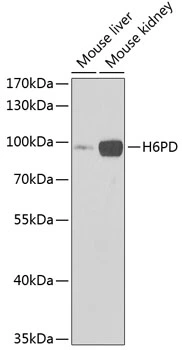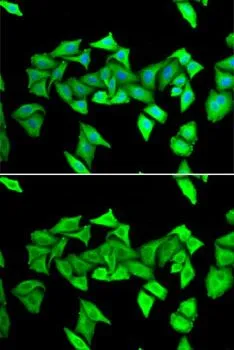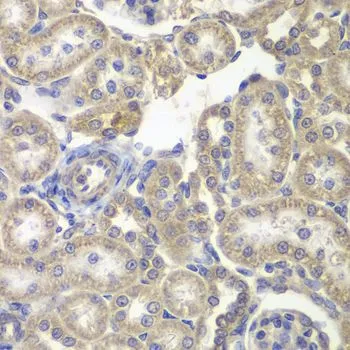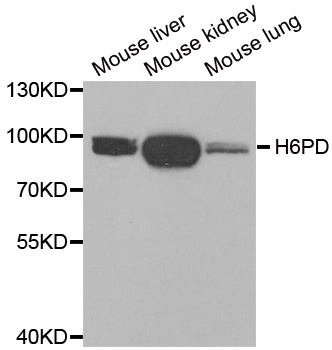
WB analysis of various sample lysates using GTX54162 H6PD antibody. The signal was developed with ECL plus-Enhanced. Dilution : 1:1000 Loading : 25microg per lane
H6PD antibody
GTX54162
ApplicationsImmunoFluorescence, Western Blot, ImmunoCytoChemistry, ImmunoHistoChemistry, ImmunoHistoChemistry Paraffin
Product group Antibodies
TargetH6PD
Overview
- SupplierGeneTex
- Product NameH6PD antibody
- Delivery Days Customer7
- Application Supplier NoteWB: 1:500 - 1:2000. ICC/IF: 1:10 - 1:100. IHC-P: 1:50 - 1:200. *Optimal dilutions/concentrations should be determined by the researcher.Not tested in other applications.
- ApplicationsImmunoFluorescence, Western Blot, ImmunoCytoChemistry, ImmunoHistoChemistry, ImmunoHistoChemistry Paraffin
- CertificationResearch Use Only
- ClonalityPolyclonal
- Concentration1 mg/ml
- ConjugateUnconjugated
- Gene ID9563
- Target nameH6PD
- Target descriptionhexose-6-phosphate dehydrogenase/glucose 1-dehydrogenase
- Target synonymsCORTRD1, G6PDH, GDH, H6PDH, GDH/6PGL endoplasmic bifunctional protein, 6-phosphogluconolactonase, G6PD, H form, glucose 1- dehydrogenase, glucose dehydrogenase, glucose dehyrogenase, glucose-6-phosphate dehydrogenase, salivary
- HostRabbit
- IsotypeIgG
- Protein IDO95479
- Protein NameGDH/6PGL endoplasmic bifunctional protein
- Scientific DescriptionThere are 2 forms of glucose-6-phosphate dehydrogenase. G form is X-linked and H form, encoded by this gene, is autosomally linked. This H form shows activity with other hexose-6-phosphates, especially galactose-6-phosphate, whereas the G form is specific for glucose-6-phosphate. Both forms are present in most tissues, but H form is not found in red cells. [provided by RefSeq, Jul 2008]
- Storage Instruction-20°C or -80°C,2°C to 8°C
- UNSPSC12352203






![ICC/IF analysis of COS7 cells transiently transfected with H6PD plasmid using GTX84394 H6PD antibody [1H6].](https://www.genetex.com/upload/website/prouct_img/normal/GTX84394/GTX84394_1066_ICCIF_w_23061420_961.webp)
![ICC/IF analysis of COS7 cells transiently transfected with H6PD plasmid using GTX84395 H6PD antibody [2A7].](https://www.genetex.com/upload/website/prouct_img/normal/GTX84395/GTX84395_1068_ICCIF_w_23061420_298.webp)